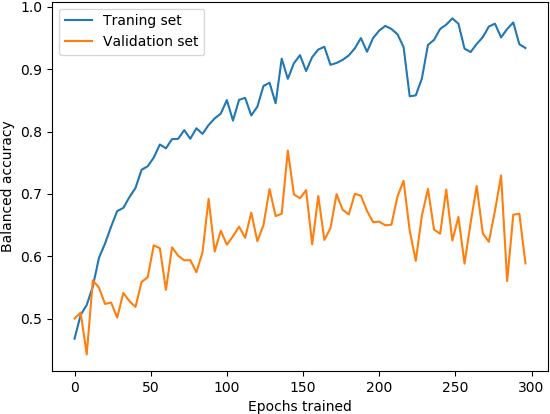Tuomas P. Oikarinen
Massachusetts Institute of Technology
GraphMDN: Leveraging graph structure and deep learning to solve inverse problems
Oct 26, 2020



Abstract:The recent introduction of Graph Neural Networks (GNNs) and their growing popularity in the past few years has enabled the application of deep learning algorithms to non-Euclidean, graph-structured data. GNNs have achieved state-of-the-art results across an impressive array of graph-based machine learning problems. Nevertheless, despite their rapid pace of development, much of the work on GNNs has focused on graph classification and embedding techniques, largely ignoring regression tasks over graph data. In this paper, we develop a Graph Mixture Density Network (GraphMDN), which combines graph neural networks with mixture density network (MDN) outputs. By combining these techniques, GraphMDNs have the advantage of naturally being able to incorporate graph structured information into a neural architecture, as well as the ability to model multi-modal regression targets. As such, GraphMDNs are designed to excel on regression tasks wherein the data are graph structured, and target statistics are better represented by mixtures of densities rather than singular values (so-called ``inverse problems"). To demonstrate this, we extend an existing GNN architecture known as Semantic GCN (SemGCN) to a GraphMDN structure, and show results from the Human3.6M pose estimation task. The extended model consistently outperforms both GCN and MDN architectures on their own, with a comparable number of parameters.
Landslide Geohazard Assessment With Convolutional Neural Networks Using Sentinel-2 Imagery Data
Jun 10, 2019



Abstract:In this paper, the authors aim to combine the latest state of the art models in image recognition with the best publicly available satellite images to create a system for landslide risk mitigation. We focus first on landslide detection and further propose a similar system to be used for prediction. Such models are valuable as they could easily be scaled up to provide data for hazard evaluation, as satellite imagery becomes increasingly available. The goal is to use satellite images and correlated data to enrich the public repository of data and guide disaster relief efforts for locating precise areas where landslides have occurred. Different image augmentation methods are used to increase diversity in the chosen dataset and create more robust classification. The resulting outputs are then fed into variants of 3-D convolutional neural networks. A review of the current literature indicates there is no research using CNNs (Convolutional Neural Networks) and freely available satellite imagery for classifying landslide risk. The model has shown to be ultimately able to achieve a significantly better than baseline accuracy.
 Add to Chrome
Add to Chrome Add to Firefox
Add to Firefox Add to Edge
Add to Edge